Page redirects or loops unexpectedly
You can redirect posts or pages using our Yoast SEO plugin. If a page redirects unexpectedly or causes a redirect loop only when our plugin is active, this means a redirect has been added to our plugin.
Table of contents
Example of the error
A possible redirect loop error, like ERR_TOO_MANY_REDIRECTS may be shown below in Chrome. Similar errors may appear in FireFox, Edge, or Safari browsers.
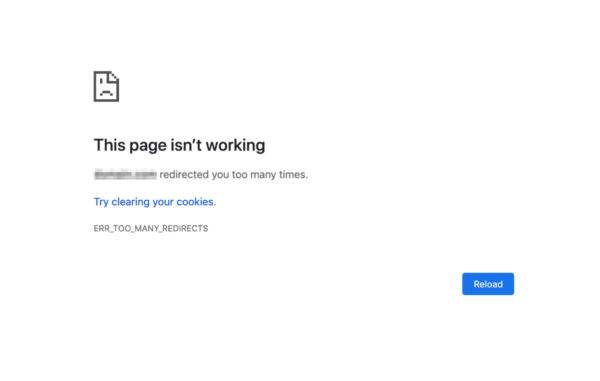
How to find out if Yoast SEO is causing the error
You can check if Yoast is causing these redirects loop. One method that works for all set-ups is to run a header check on the page. Each page has header information that is only seen by the browser and is not displayed for humans. Using some tools such as a Header Checker or a curl test you can see this data.
Curl test
If you want to perform a curl test to check the header, you’ll need to navigate to your terminal (for Mac users). Once in the terminal, enter in curl -I full url of the page (example: curl -I https://yoast.com/licenses/ ), then hit enter.
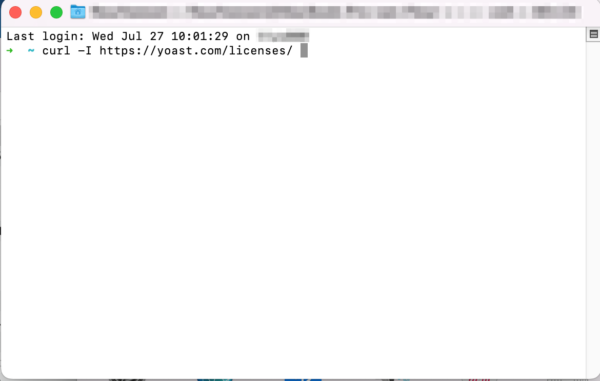
Some data will then appear. You can then review the redirect and determine if Yoast is responsible as it will say Yoast SEO Premium in it.
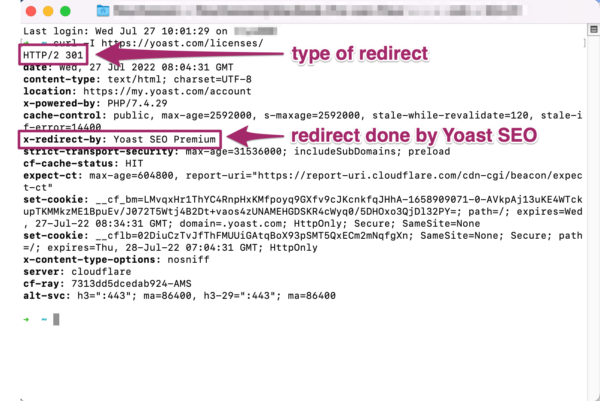
Redirect added to the individual page or post
The post level 301 redirect feature has been removed from the free plugin in favor of the more robust premium redirect manager as discussed here. If you have an older version of the free plugin you may still see these.
Although you can no longer add new post level redirects, previously entered post level redirects may appear under the advanced tab of the Yoast SEO (free or premium) meta box.
Redirect added in SEO settings (Premium only)
- Log in to your WordPress website.
When you’re logged in, you will be in your ‘Dashboard’.
- Click on ‘Yoast SEO’.
On the left-hand side, you will see a menu. In that menu, click on ‘Yoast SEO’.
- Click on ‘Redirects’.
The ‘Yoast SEO’ settings will expand providing you with additional options. Click on ‘Redirects’.
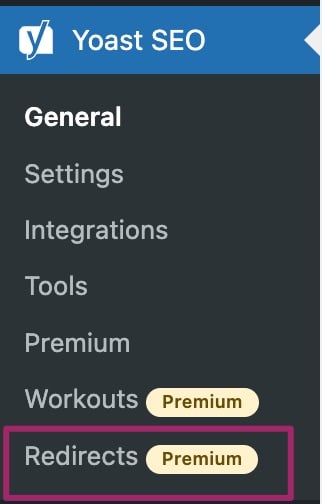
- Search for the post or page slug that should not redirect.
Update or remove inaccurate redirects for the post or page.
My date archives redirect to the homepage
If your date archives are disabled in Yoast SEO, they are redirected to your homepage. If you want to enable your date archives, follow the steps below.
- Log in to your WordPress website.
When you’re logged in, you will be in your ‘Dashboard’. - Click on ‘Yoast SEO’.
On the left-hand side, you will see a menu. In that menu, click on ‘Yoast SEO’. - Click on ‘Settings’.
The Yoast SEO settings will expand providing you additional options. Click on ‘Settings’.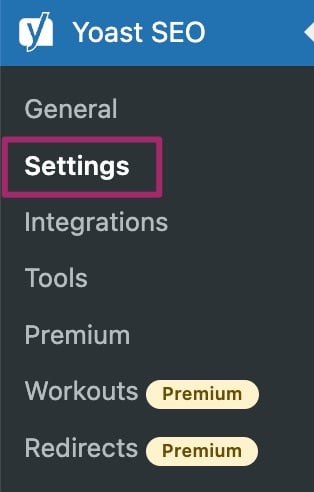
- Click ‘Advanced’, then ‘Date archives’.
Click the Advanced menu item in the menu on the left. Then, click ‘Date archives’.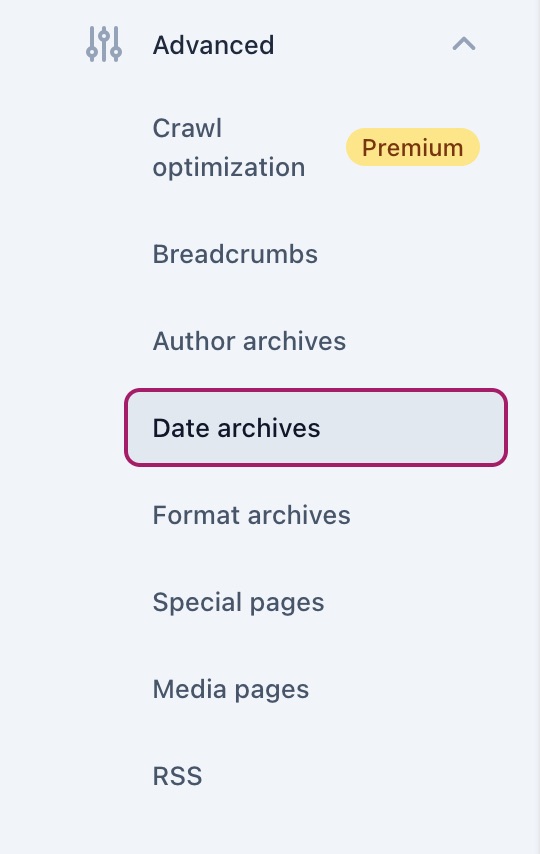
- Click the switch next to ‘Enable date archives’.
Enable or disable your date archives by clicking the toggle next to ‘Enable date archives’. If your archives are enabled, you will see a checkmark. If your archives are disabled, the toggle will show an X.
- Click ‘Save changes’.
My author archives redirect to the homepage
If your author archives are disabled in Yoast SEO, they are redirected to your homepage. If you want to enable your author archives, follow the steps below.
- Log in to your WordPress website.
When you’re logged in, you will be in your ‘Dashboard’. - Click on ‘Yoast SEO’.
On the left-hand side, you will see a menu. In that menu, click on ‘Yoast SEO’. - Click on ‘Settings’.
The Yoast SEO settings will expand providing you additional options. Click on ‘Settings’.
- Click ‘Advanced’, then ‘Author archives’.
Click the Advanced menu item in the menu on the left. Then, click ‘Author archives’.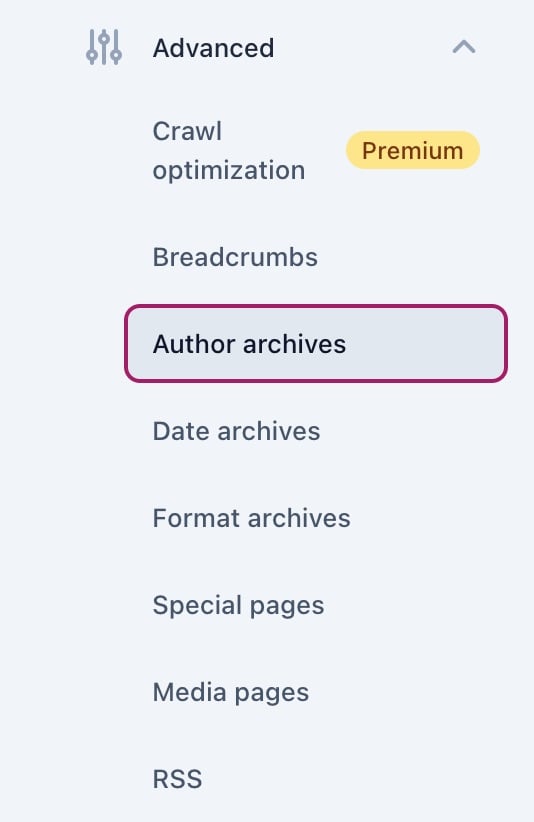
- Click the switch next to ‘Enable author archives’.
Enable or disable your author archives by clicking the toggle next to ‘Enable author archives’. If your archives are enabled, you will see a checkmark. If your archives are disabled, the toggle will show an X.
- Click ‘Save changes’.
Remove category prefix
In some cases, removing the category prefix conflicts with other plugin or theme features. If your site uses the remove category prefix option, please change the option to keep the category prefix.


